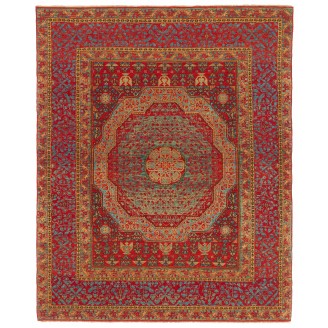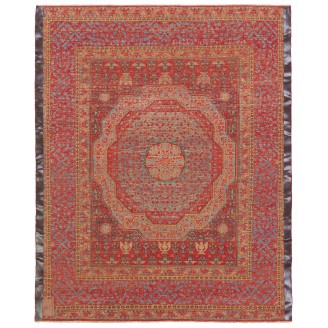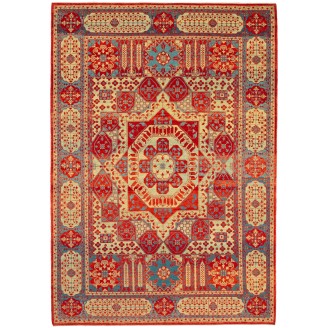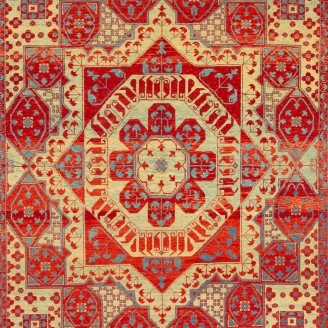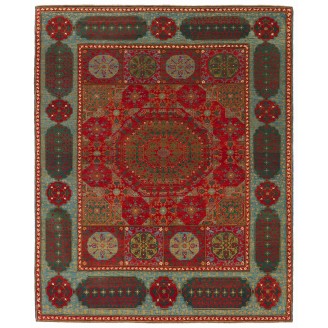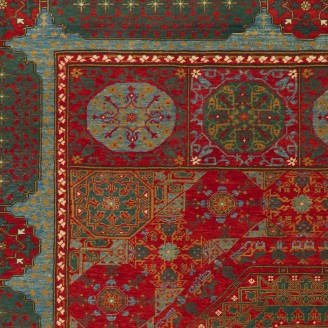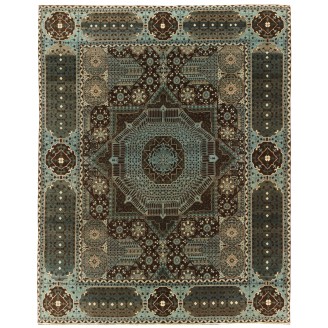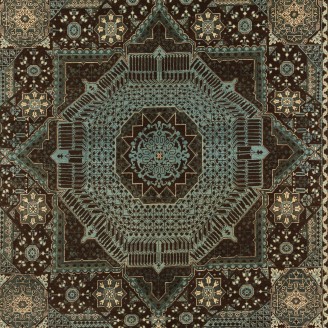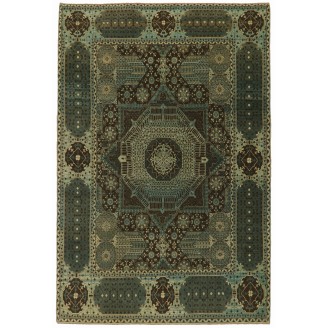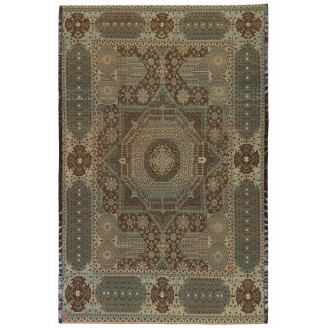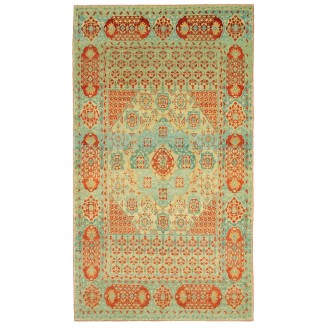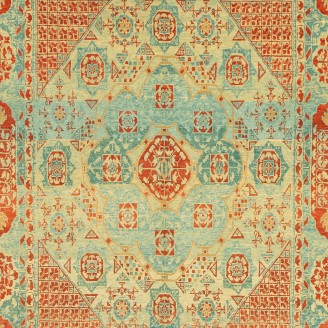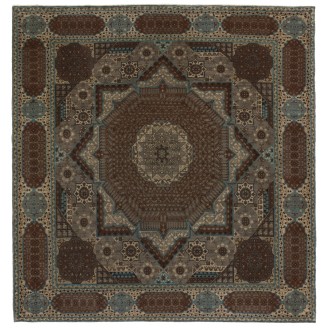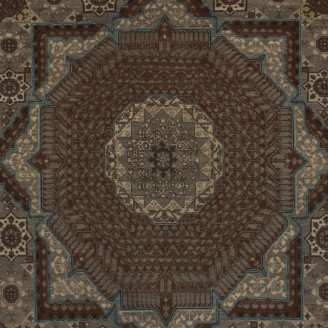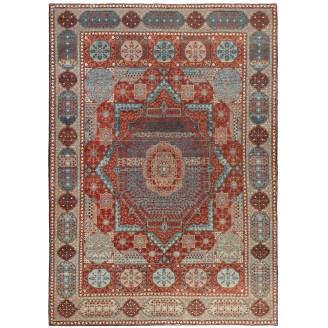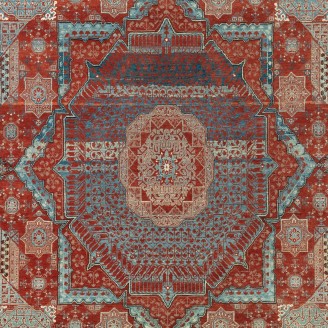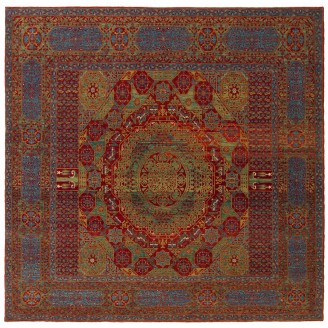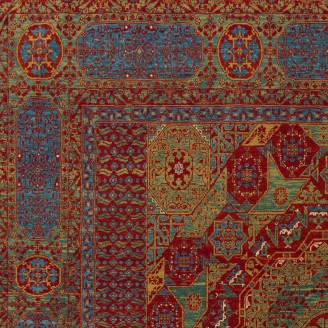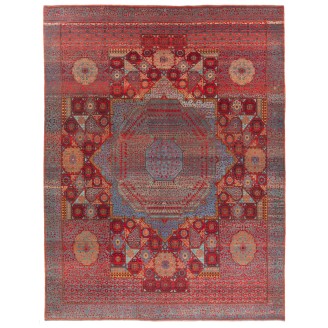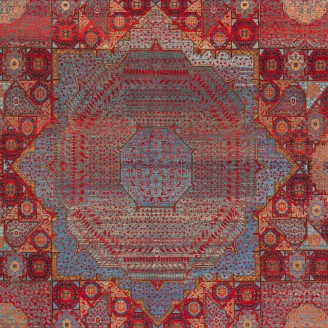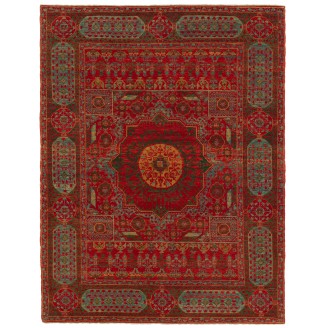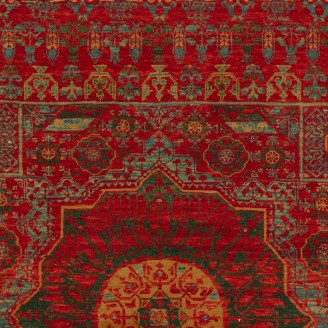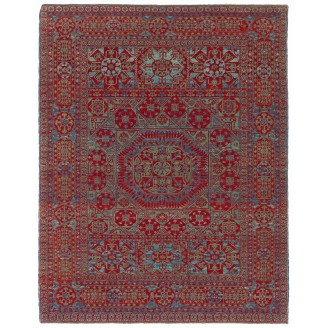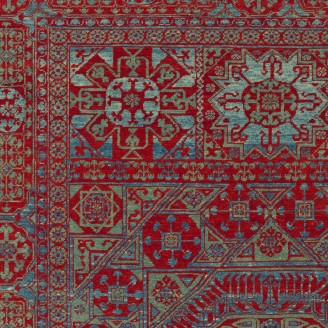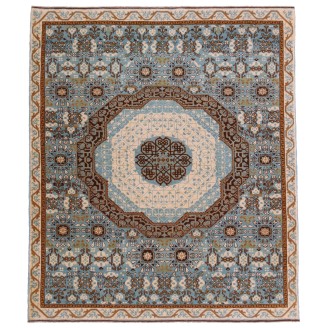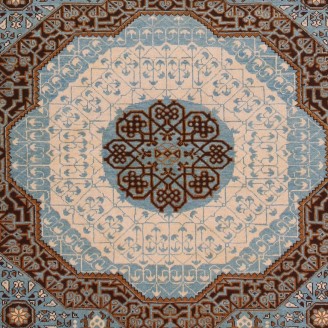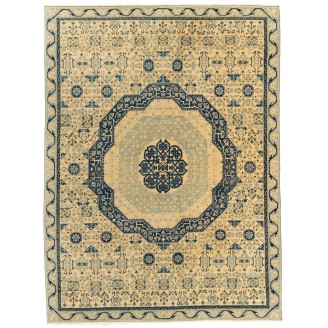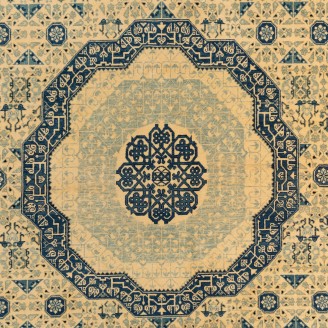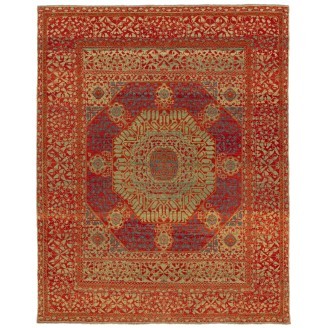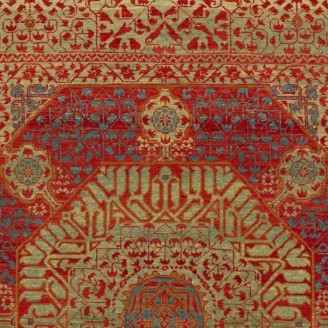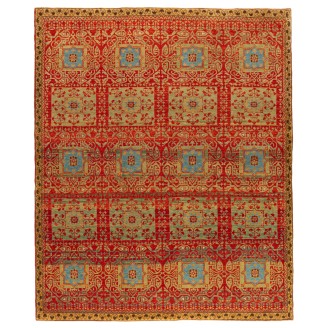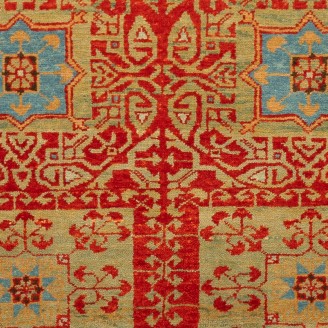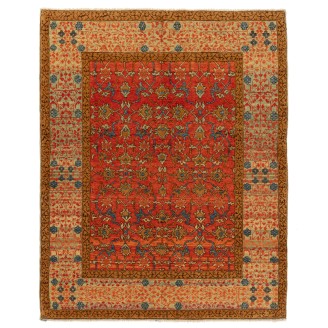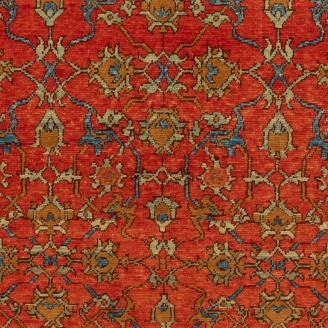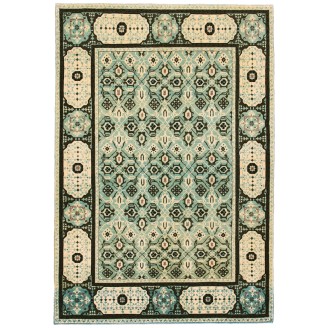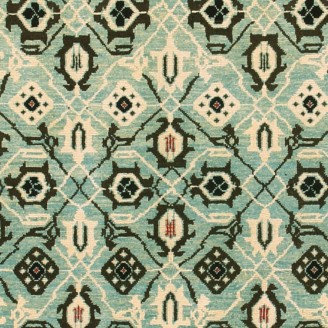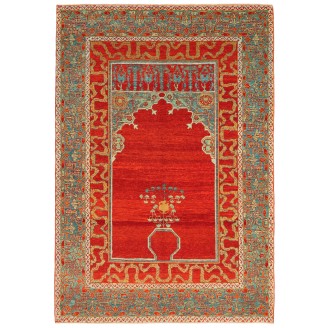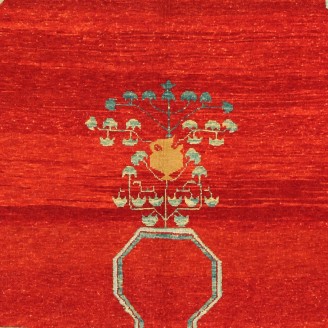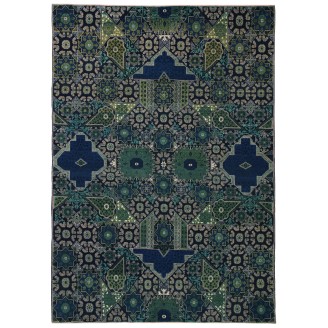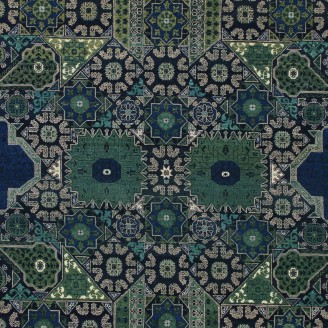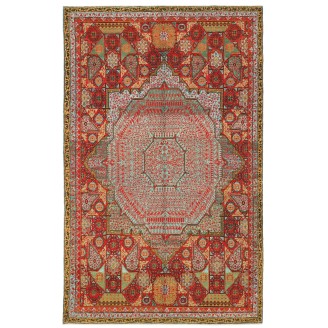COLLECTION OF MAMLOUK RUGS
The Renaissance of Islamic Art. We've brought the 14th-century Mamlouk rugs back to life
Model: ART00742
Dimensions: 4'8" X 5'8"(143cm x 173cm)
Introducing the exquisite Mamluk Rug with Cusped Medallion (Model: ART00742) from Ararat Rugs, a masterpiece that embodies the rich heritage of Mamluk artistry. Handcrafted with meticulous attention to detail, this rug showcases the distinctive geometric patterns and vibrant colors charact..
Price:
$4,600
Ex Tax:$4,600
Model: ART00201
Dimensions: 6'9" X 9'6"(206cm x 290cm)
The source of the rug comes from the book Renaissance of Islam, Art of the Mamluks, Esin Atil, Smithsonian Institution Press, Washington D.C., 1981 nr.126. This rug with palm trees and cypresses was designed in the late 15th-century rug by Mamluk Sultane of Cairo, Egypt. It is exhibited at the Washi..
Price:
$14,000
Ex Tax:$14,000
Model: ART00700
Dimensions: 7'8" X 6'3"(234cm x 192cm)
The source of carpet comes from the book How to Read - Islamic Carpets, Walter B. Denny, The Metropolitan Museum of Art, New York 2014 fig.61,62. The five-star-medallion carpet was designed in the early 16th century by Mamluk Sultane of Cairo, Egypt. It is exhibited at The Metropolitan Museum o..
Price:
$8,900
Ex Tax:$8,900
Model: ART00288
Dimensions: 8'2" X 10'1"(249cm x 308cm)
The source of carpet comes from the book How to Read - Islamic Carpets, Walter B. Denny, The Metropolitan Museum of Art, New York 2014 fig.61,62. The five-star-medallion carpet was designed in the early 16th century by Mamluk Sultane of Cairo, Egypt. It is exhibited at The Metropolitan Museum of Art..
Price:
$15,200
Ex Tax:$15,200
Model: ART00727
Dimensions: 12'2" X 8'1"(372cm x 248cm)
The source of carpet comes from the book How to Read - Islamic Carpets, Walter B. Denny, The Metropolitan Museum of Art, New York 2014 fig.61,62. The five-star-medallion carpet was designed in the early 16th century by Mamluk Sultane of Cairo, Egypt. It is exhibited at The Metropolitan Museum o..
Price:
$18,450
Ex Tax:$18,450
Model: ART00142
Dimensions: 5'3" X 9'2"(161cm x 280cm)
The source of carpet comes from the book How to Read - Islamic Carpets, Walter B. Denny, The Metropolitan Museum of Art, New York 2014 fig.61,62. The five-star-medallion carpet was designed in the early 16th century by Mamluk Sultane of Cairo, Egypt. It is exhibited at The Metropolitan Museum of Art..
Price:
$7,800
Ex Tax:$7,800
Model: ART00373
Dimensions: 7'9" X 8'0"(237cm x 246cm)
The source of carpet comes from the book How to Read - Islamic Carpets, Walter B. Denny, The Metropolitan Museum of Art, New York 2014 fig.61,62. The five-star-medallion carpet was designed in the early 16th century by Mamluk Sultane of Cairo, Egypt. It is exhibited at The Metropolitan Museum of Art..
Price:
$13,700
Ex Tax:$13,700
Model: ART00374
Dimensions: 6'8" X 9'4"(205cm x 285cm)
The source of carpet comes from the book How to Read - Islamic Carpets, Walter B. Denny, The Metropolitan Museum of Art, New York 2014 fig.61,62. The five-star-medallion carpet was designed in the early 16th century by Mamluk Sultane of Cairo, Egypt. It is exhibited at The Metropolitan Museum of Art..
Price:
$11,500
Ex Tax:$11,500
Model: ART00551
Dimensions: 8'4" X 8'2"(256cm x 250cm)
The source of carpet comes from the book How to Read - Islamic Carpets, Walter B. Denny, The Metropolitan Museum of Art, New York 2014 fig.61,62. The five-star-medallion carpet was designed in the early 16th century by Mamluk Sultane of Cairo, Egypt. It is exhibited at The Metropolitan Museum of Art..
Price:
$16,500
Ex Tax:$16,500
Model: ART00035
Dimensions: 8'11" X 11'7"(274cm x 355cm)
The source of the rug comes from the book Völker, Angela, Die orientalischen Knüpfteppiche das MAK, Vienna: Böhlau, 2001: 42–5. This rug with the central star was designed in the early 16th-century rug by Mamluk Sultane of Cairo, Egypt. It is exhibited at MAK – Museum of Applied Arts, Vienna Austria..
Price:
$29,000
Ex Tax:$29,000
Model: ART00573
Dimensions: 5'1" X 6'5"(155cm x 197cm)
The source of the rug comes from the book Renaissance of Islam, Art of the Mamluks, Esin Atil, Smithsonian Institution Press, Washington D.C., 1981 nr.127. This rug with the central star was designed in the early 16th-century rug by Mamluk Sultane of Cairo, Egypt. It is exhibited at the Washington D..
Price:
$6,200
Ex Tax:$6,200
Model: ART00698
Dimensions: 5'11" X 4'7"(182cm x 142cm)
This rug with the central star was designed in the early 16th-century rug by Mamluk Sultane of Cairo, Egypt. Attempting to read early carpets produced in workshops in Cairo provides an entirely different set of challenges. Cairene carpets, distinguished by their limited color palette, symmetrical kn..
Price:
$5,120
Ex Tax:$5,120
Model: ART00286
Dimensions: 5'0" X 5'8"(153cm x 175cm)
The design source of the rug comes from The C. L. David Collection, Copenhagen. This rug with the Cusped Medallion was designed in the early 16th-century rug by Mamluk Sultane of Cairo, Egypt. Once in the Hirth Collection, and later with Ulrich Schürmann in 1965, this piece now belongs to the David ..
Price:
$4,600
Ex Tax:$4,600
Model: ART00339
Dimensions: 5'0" X 6'7"(153cm x 201cm)
The design source of the rug comes from The C. L. David Collection, Copenhagen. This rug with the Cusped Medallion was designed in the early 16th-century rug by Mamluk Sultane of Cairo, Egypt. Once in the Hirth Collection, and later with Ulrich Schürmann in 1965, this piece now belongs to the David ..
Price:
$5,300
Ex Tax:$5,300
Model: ART00564
Dimensions: 5'2" X 6'5"(158cm x 197cm)
The design source of the rug comes from the book Renaissance of Islam, Art of the Mamluks, Esin Atil, Smithsonian Institution Press, Washington D.C., 1981 nr.128. This rug with a large central octagon was designed in the early 16th-century rug by Mamluk Sultane of Cairo, Egypt. It is exhibited at th..
Price:
$6,500
Ex Tax:$6,500
Model: ART00143
Dimensions: 4'9" X 5'9"(146cm x 177cm)
The source of the rug comes from the Baillet-Latour Mamluk Carpet, Vienna Book(1892) and Sarre-Trenkwald(1926, pl.48). This rug was designed in the early 16th-century rug by Mamluk Sultane of Cairo, Egypt. This carpet was sold at Christie's London on 8 April 2014 and purchased by the Louvre Museum. ..
Price:
$4,300
Ex Tax:$4,300
Model: ART00283
Dimensions: 4'1" X 5'1"(126cm x 155cm)
The source of the carpet comes from the Mercer Collection Sotheby's 2000 (catalog cover). This Mamluk-Cairene carpet is known, curiously featuring some type of lattice was designed in the early 16th-century rug by Mamluk Sultane of Cairo, Egypt. This piece from the Bavarian National Museum in Munich..
Price:
$5,300
Ex Tax:$5,300
Model: ART00253
Dimensions: 5'1" X 7'3"(155cm x 223cm)
The source of the carpet comes from the Mercer Collection Sotheby's 2000 (catalog cover). This Mamluk-Cairene carpet is known, curiously featuring some type of lattice was designed in the early 16th-century rug by Mamluk Sultane of Cairo, Egypt. This piece from the Bavarian National Museum in Munich..
Price:
$5,900
Ex Tax:$5,900
Model: ART00147
Dimensions: 4'8" X 6'9"(143cm x 207cm)
The source of the rug comes from the Museum of Islamic Art at the Pergamon Museum, Berlin, Germany. This prayer rug with cloudbands was designed in the early 16th-century rug by Mamluk Sultane of Cairo, Egypt. This carpet demonstrates through its design that it belongs to the group of prayer rugs. T..
Price:
$5,100
Ex Tax:$5,100
Model: ART00141
Dimensions: 7'3" X 10'4"(222cm x 317cm)
The source of the rug comes from the book Völker, Angela, Die orientalischen Knüpfteppiche das MAK, Vienna: Böhlau, 2001: 42–5. This rug with the central star was designed in the early 16th-century rug by Mamluk Sultane of Cairo, Egypt. It is exhibited at MAK – Museum of Applied Arts, Vienna Austria..
Price:
$0
Ex Tax:$0
Model: ART00051
Dimensions: 4'6" X 7'4"(139cm x 225cm)
The source of the rug comes from the book Völker, Angela, Die orientalischen Knüpfteppiche das MAK, Vienna: Böhlau, 2001: 42–5. This rug with the central star was designed in the early 16th-century rug by Mamluk Sultane of Cairo, Egypt. It is exhibited at MAK – Museum of Applied Arts, Vienna Austria..
Price:
$6,500
Ex Tax:$6,500
